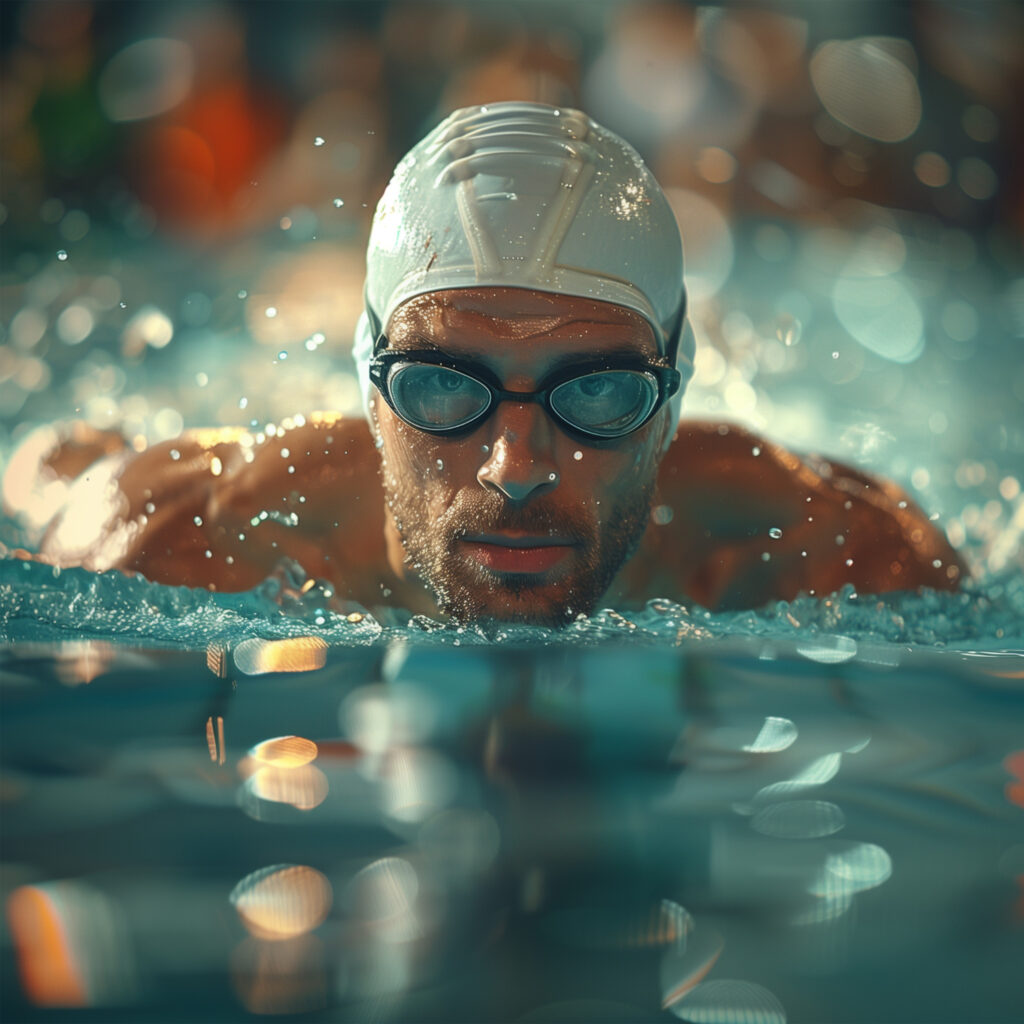
Swimmers and cyclists both rank among the fittest athletes in the world, known for their stamina, discipline, and efficiency. But while they share the endurance spotlight, the way their bodies develop, the muscles they engage, and the demands of their training are fundamentally different. Whether you’re picking a sport or just curious about how each stacks up, understanding these differences can reveal a lot about what kind of fitness each builds, and which one might be right for you.
Swimming is a full-body workout in the purest sense. Every stroke activates a complex chain of muscle groups—from the shoulders and lats powering through water to the core keeping the body aligned, down to the calves pushing off the wall. It’s one of the few sports that simultaneously develops upper body, lower body, and core strength without ever touching a weight rack.
Cycling, by contrast, is intensely lower-body dominant. Quads, glutes, hamstrings, and calves do most of the heavy lifting (or pedaling). Over time, cyclists develop dense, powerful leg muscles with high endurance capacity. While the upper body plays a stabilizing role—especially in road cycling or mountain biking—it doesn’t see nearly the same demand as in swimming.
Both sports offer elite-level cardio training, but they go about it differently. Swimming involves breath control and intermittent hypoxia, meaning the body adapts to limited oxygen intake. That leads to stronger respiratory muscles and improved oxygen efficiency—benefits that show up even outside the pool.
Cycling, on the other hand, is more of a sustained aerobic grind. Long-distance rides can last hours, building massive cardiovascular endurance and pushing VO2 max to the upper limits. Because it’s easier to sustain a steady pace on a bike than in water, cyclists often log more volume in pure time and distance.
One of swimming’s standout advantages is its low-impact nature. Water supports the body, reducing stress on joints and bones. That makes it ideal for people recovering from injury, managing chronic pain, or looking for a lifelong sport that goes easy on the body.
Cycling is also low-impact, at least compared to running or high-intensity interval training. But it does carry some risks—namely from repetitive motion (think: knee strain or IT band issues) and external factors like crashes or road hazards. Still, it’s easier on the body than most high-impact sports and offers a great endurance option for joint-conscious athletes.
Swimmers tend to develop broad shoulders, strong backs, and lean—but muscular—frames. Years of water resistance training create a balanced physique, with noticeable upper-body definition and core strength.
Cyclists, especially road cyclists, typically have lean upper bodies with more muscle mass concentrated in the legs. Track sprinters may bulk up considerably, but endurance cyclists often maintain a lightweight build to improve climbing and endurance efficiency.
Swimming demands rhythm, focus, and comfort in isolation—athletes often train solo in silent, meditative water environments. Cyclists train out in the open, dealing with terrain, weather, and sometimes long, lonely hours on the road or trail. Both sports build grit, but in very different atmospheres.
Choosing between swimming and cycling depends on your fitness goals, injury history, and personal preferences. Want full-body strength, joint-friendly training, and improved breathing efficiency? Swimming might be your lane. Prefer powerful legs, outdoor adventures, and long-distance stamina? Cycling could be your ride.
Either way, both sports deliver top-tier endurance, excellent cardiovascular health, and mental toughness. They just take different roads—or lanes—to get there.

Lorem ipsum dolor sit amet, consectetur adipiscing elit. Ut elit tellus, luctus nec ullamcorper mattis, pulvinar dapibus leo.
Lorem ipsum dolor sit amet, consectetur adipiscing elit. Ut elit tellus, luctus nec ullamcorper mattis, pulvinar dapibus leo.